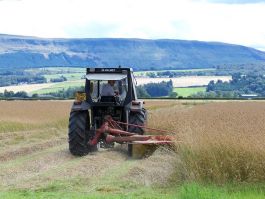 Photo Credit: Wikimedia Commons
Photo Credit: Wikimedia Commons
Growing crops entails much more than working the soil, planting seeds, and harvesting. Harvest timing is critical when growing forages or anything edible and must be thought through carefully.
You want to harvest the highest biomass, and you also want to have the highest nutritional quality and palatability possible. However, the two aren’t linear.
Theoretically, a crop will continue to grow if it gets the water, sunlight, and nutrients it needs. But it won’t maintain nutrition as it continues to grow.
After your crops reach their maximum point nutritionally, they begin to degrade. So, you want to hit that sweet spot where both nutrition and biomass are high. Also, you want to time the harvest to get the best possible 2nd or 3rd cuttings.
We’ll also talk about the “how” of harvesting: recommended cutting height, maintaining your hay or silage quality after harvesting, and essential safety tips for working with harvesting equipment.
When to Cut Individual Forage Crops
When to harvest forage crops varies a bit, depending on what you’re growing.
Alfalfa
With a newly planted stand, give alfalfa 70 to 90 days after germination before taking the first cutting. This period allows the plants to establish and develop a robust and vigorous root system. Cutting too soon can cause injury from low food reserves.
If you have an established stand, harvest the first cutting of an established stand at the late-bud to first-flower stage for optimal forage quality and dry matter yield. Then, make subsequent cuttings at 32-to-35-day intervals (late bud to early bloom) until late August or early September. This schedule is often referred to as a "4 summer-cut system."
 Photo Credit: U.S. Department of Agriculture | Flickr | Public Domain Mark 1.0
Photo Credit: U.S. Department of Agriculture | Flickr | Public Domain Mark 1.0
In more northern regions, alfalfa should not be cut 4 to 6 weeks before the first killing frost or between the first week of September and mid-October. This lets the plants store up food reserves to survive through the winter.
If your goal is a long-lived stand, consider a longer cutting interval. If you’re growing a short rotation crop—3 years or less—go with a shorter cutting interval to maximize forage quality.
Looking for high-quality alfalfa seed? Deer Creek Seed has an extensive selection to meet your needs.
Clover
Harvest clover when it’s between bud stage and no more than 20% bloom for the best yield, quality, and stand persistence. You should be able to get two summer cuts and a fall cutting from your crop when you follow this timing.
 Photo Credit: pxfuel
Photo Credit: pxfuel
Letting the field go past 40% bloom results in the lowest nutrient value and biomass yield.
Looking for high-quality clover seed? Check out our selection.
Trefoil
Birdsfoot trefoil has relatively low stored reserves during the growing season compared to the other forage crops. Because of this low energy storage, you shouldn’t harvest until the plants bloom to maximize forage quality.
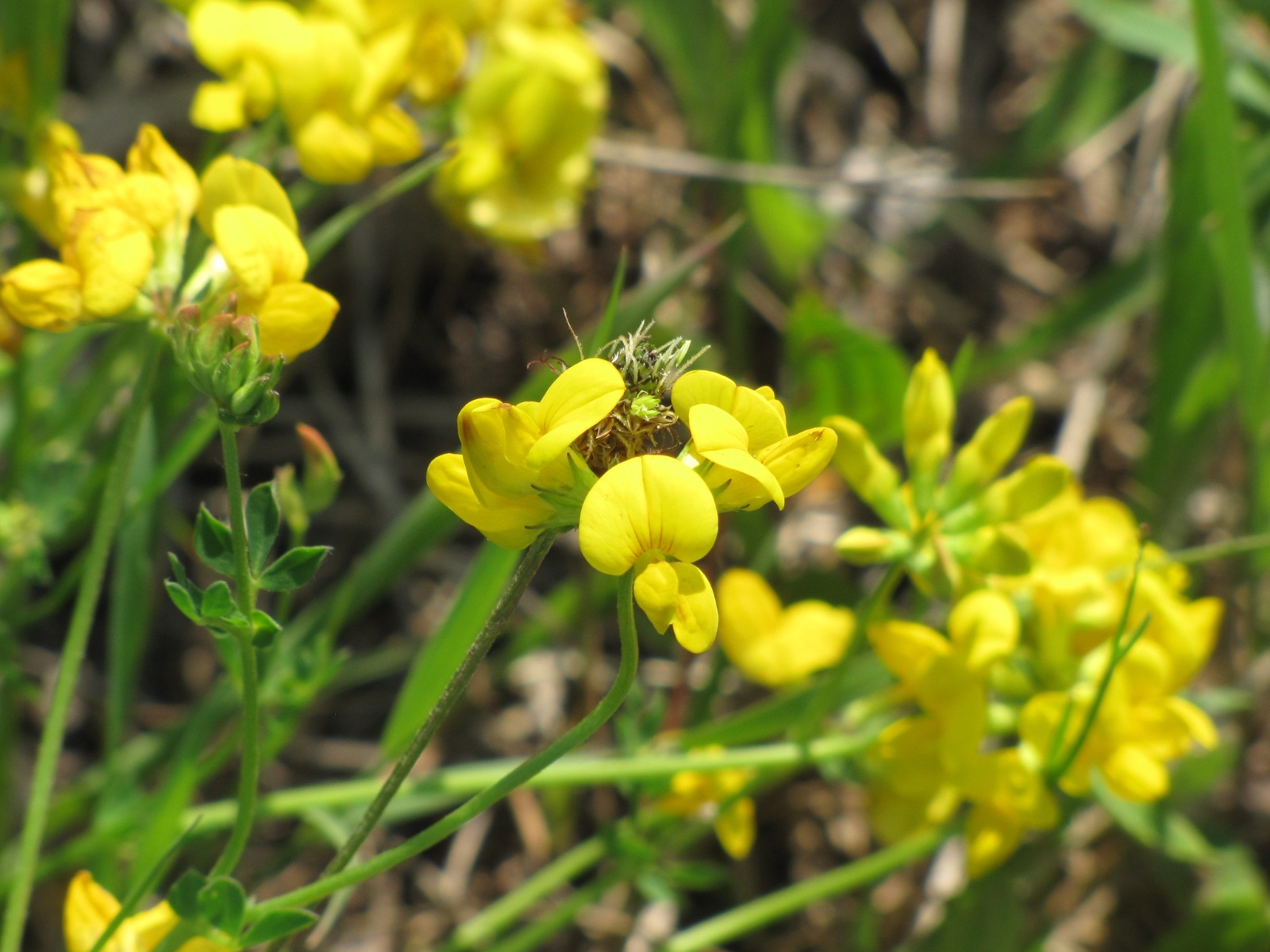 Photo Credit: USFWS Midwest Region | Flickr | Public Domain Mark 1.0
Photo Credit: USFWS Midwest Region | Flickr | Public Domain Mark 1.0
Take the first cutting at early bloom and a subsequent cutting at six weeks when the stand is at least mid-bloom. For most growers, the second cutting occurs mid to late August.
Do not harvest between the beginning of September and the first killing frost. Plants need this time to accumulate root reserves for winter survival.
Timothy Grass
When growing timothy grass as forage, it needs about seven weeks (or 50 days) of growth before it’s ready for its first cutting.
The best time to cut it is just before bloom. At the latest, harvest as hay before more than 50% of the field is in bloom. The longer you wait and the more blossoms open, the lower the yield quality.
Then, give it 30-40 days for each subsequent cutting. Timothy can be sensitive to over-harvesting, so carefully assess the crop to determine when to harvest.
Sorghum, Sorghum-Sudangrass, & Sudangrass
Harvest timing is related more to height than flowering stage with sorghum, sorghum-sudangrass, and sudangrass. Once non-grain-producing types flower, the digestibility decreases rapidly, resulting in low-quality hay and silage.
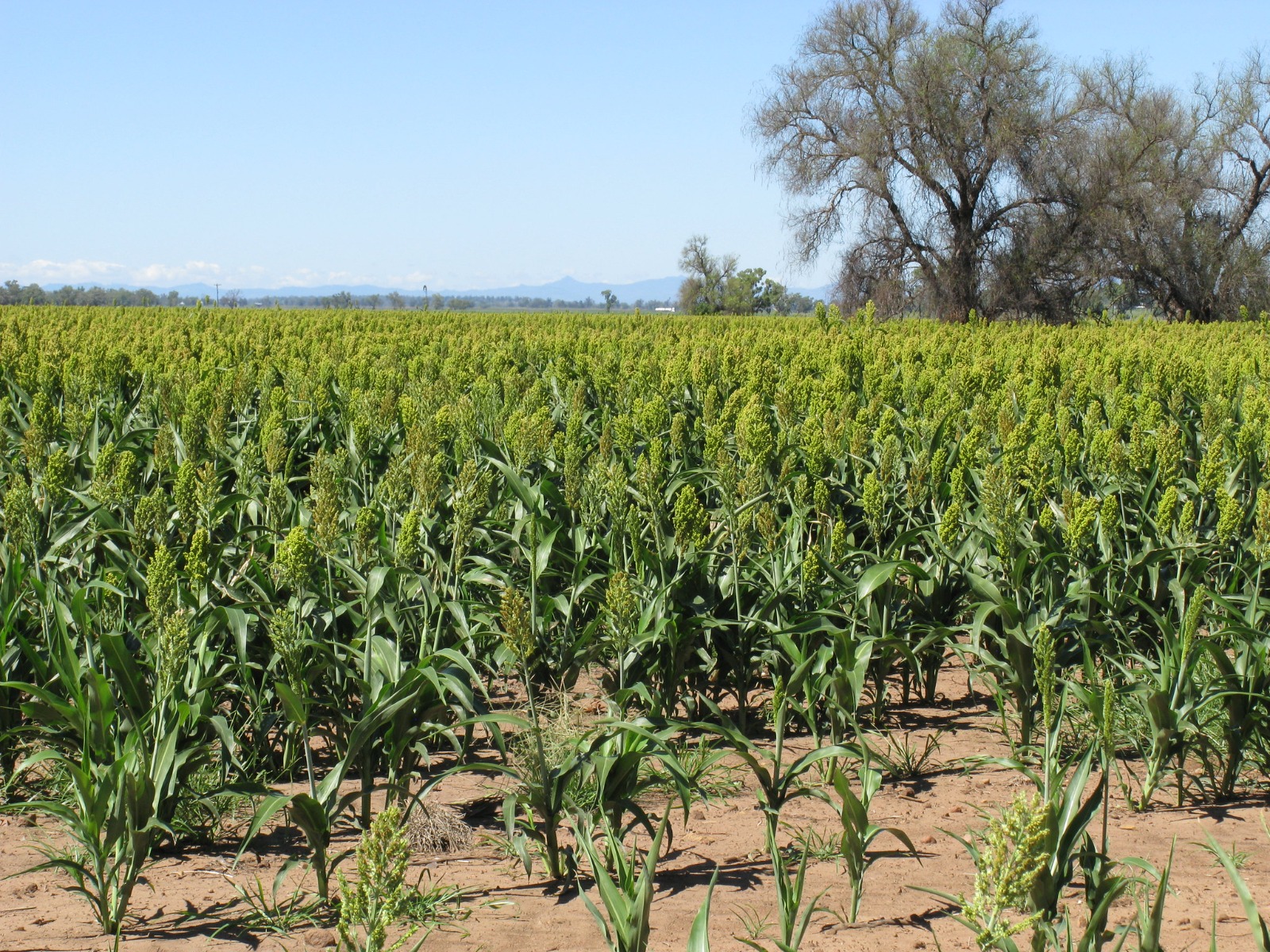 Photo Credit: Harry Rose | Flickr | CC BY 2.0
Photo Credit: Harry Rose | Flickr | CC BY 2.0
So, most growers try to harvest when plants are 3 to 4’ tall. Most crops are ready for the first cutting in 45 to 60 days and the second 30 to 40 days after.
Note: To avoid prussic acid concerns, wait until plants are at least 18-24” tall before harvesting.
Best Cutting Height for Forages
Upon first thought, it would make the most sense to cut forages as low as possible to maximize the yield pulled from a field. The truth, though, is cutting height is also a balancing act. You want to cut as low as you can to get as much hay as possible without jeopardizing the crop. Cutting it too low leads to several negative issues.
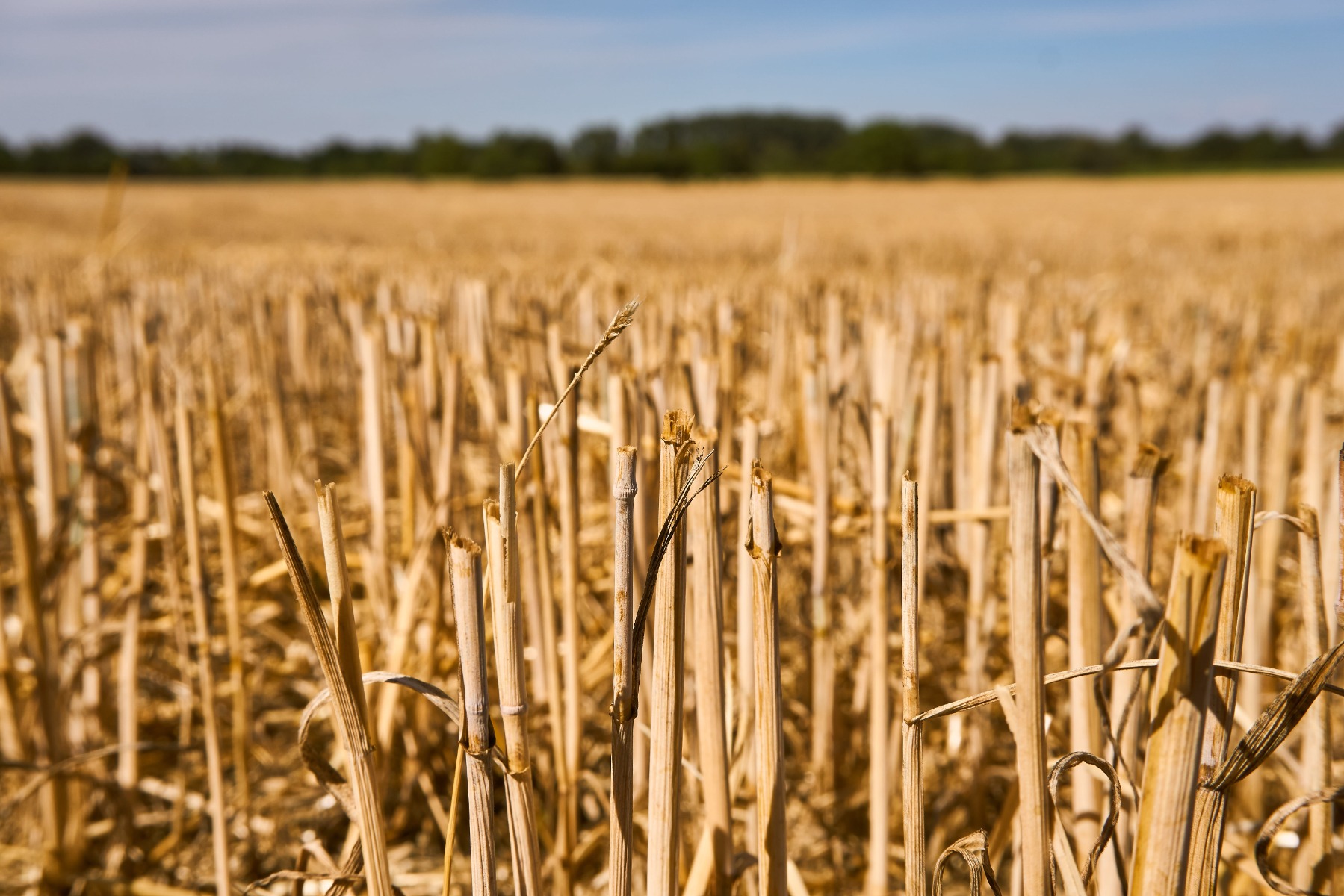 Photo Credit: pxfuel
Photo Credit: pxfuel
The most concerning problem is stand longevity. Cutting a crop too low can compromise the overall lifespan of your forage. Which you certainly don’t want to do!
This leads to the question, how is cutting height related to stand longevity?
The answer? It’s all related to where a crop stores its energy reserves.
For instance, grasses like timothy store energy in the base of their stems or the tillers. If you frequently mow these stems too low, you’ll deplete energy reserves and compromise the stand's longevity. On the other hand, alfalfa stores carbohydrates in the taproot below the ground, so it can be cut closer to the ground than grass forages.
The second problem with cutting too close is soil contamination of the harvested material, which results in increased ash content in the forage. A forage’s ash content is its mineral content. Typically, grass forages have a natural ash content of about 6% and alfalfa of about 8%.
However, if you mow too closely to the ground, you can unintentionally add soil to the crop, increasing the ash content by as much as 10 to 12%. This soil contamination relates to numerous things, mainly harvesting equipment bumping the ground as it runs over uneven fields.
Minimum Cutting Height Recommendations
Alfalfa, Clover, and Trefoil
Cutting height for legumes is controversial, and many growers have staunch opinions on how high (or low) to harvest their crop.
These forages should be cut at a 2” minimum, and producers frequently cut them at a 3” height or more.
Recent literature indicates there may be advantages to cutting alfalfa closer to the ground, leaving only an inch of stubble. Dry matter yields and nutrient yields are higher in harvests with shorter cutting heights than taller stubble. There’s no contesting that—you’re taking off more of the crop. And with the energy storage in the taproot, a lower cutting height isn’t impacting longevity.
Keep in mind, though, you still may face the issue of increased ash content. Fields are rarely completely level without any gopher holes or ruts from heavy equipment. It’s hard not to kick any dirt up into the forage material.
Timothy Grass
During the first year of growth, when cool-season grasses like timothy and orchardgrass are establishing, never harvest them shorter than 4”. In the following production years, you can drop that slightly but maintain a 3” cutting height minimum.
As mentioned above, these grasses store their carbohydrate reserves in their stem bases, so curing them too low will deplete energy reserves and shorten stand longevity.
Sorghum, Sorghum-Sudangrass, & Sudangrass
The exact height for harvesting these crops varies slightly, depending on the crop height and maturity. You want to set your harvester to leave either 6” of stubble or two stem nodes, whichever is higher. This height promotes the most rapid regrowth.
Tips For a Successful Forage Harvest
After carefully weighing when to harvest your forage crop, you don’t want to ruin it with a poor harvest. Your goal is to have the highest quality product and reduce the amount of leaf loss.
- Use the widest swath possible, ideally more than 70 percent of the cut area.
- Manipulate the swath by raking, tedding, or swath inversion for faster, even drying.
- Bale at the proper moisture levels to prevent mold growth.
- The recommended moisture content is about 18% for small rectangular and most large round bales.
- The recommended moisture content is slightly drier—12 to 14%—for high-density, large rectangular bales.
- Minimize wheel traffic damage.
- Remove hay from the field as quickly as possible.
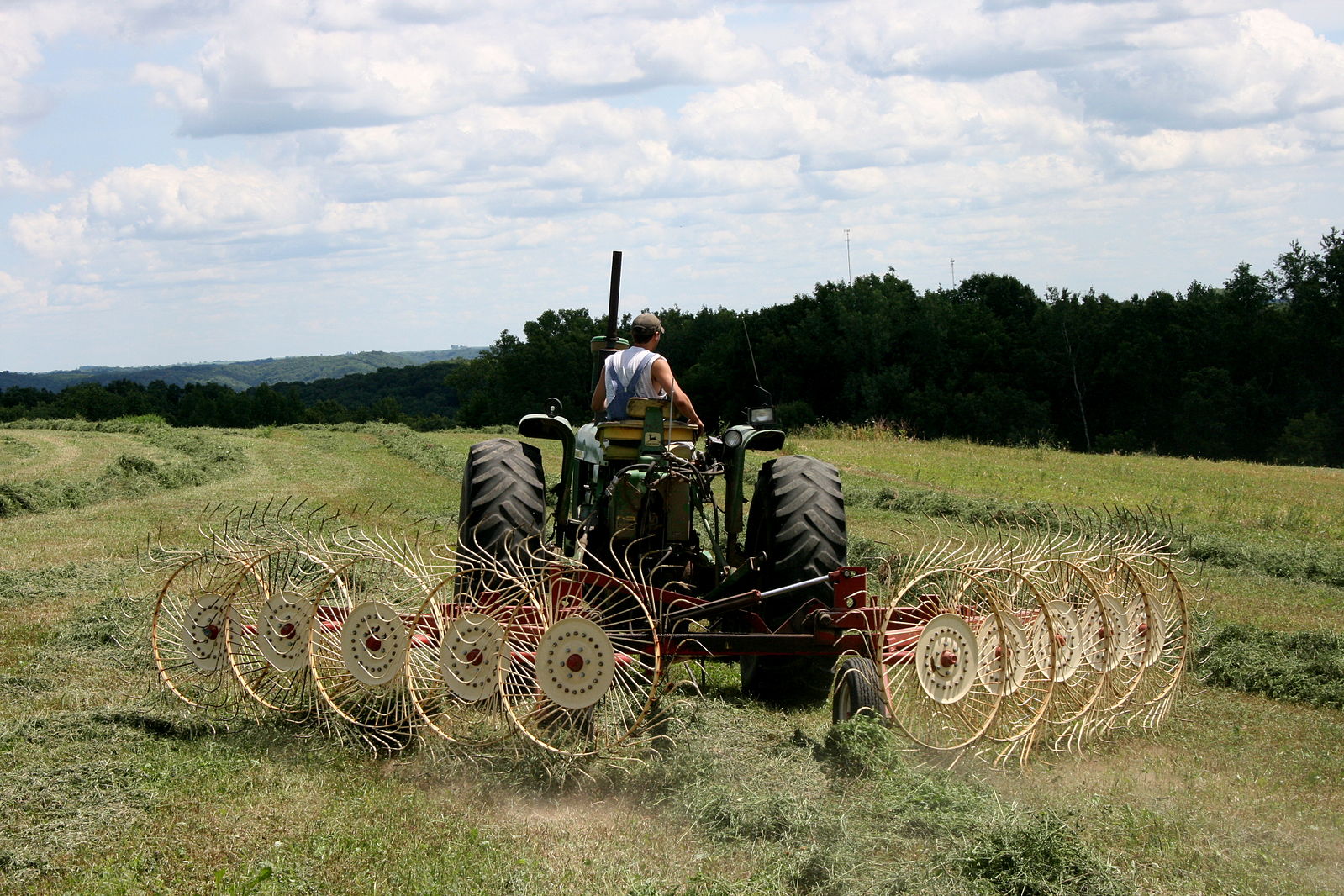 Photo Credit: Wikimedia Commons
Photo Credit: Wikimedia Commons
When chopping for silage:
- Keep wilting time under 24 hours to minimize nutrient loss.
- Chop at the recommended theoretical length of cut (TLC or TLOC) for the given forage.
Still Have Questions About Forage Harvesting?
Let the experts at Deer Creek Seed help you with your forage questions! Whether you need advice on what seed to plant, how to test your soil for fertilizer recommendations, or the seeding rates for specific crops, contact a Deer Creek Seed staff agronomist for help!
Our purpose at Deer Creek Seed is to provide the highest quality seed suited to your needs at competitive prices, with exceptional customer service. Our staff works diligently to serve our customers.
Additional Resources
- Eco Farming Daily goes in-depth about caring for your alfalfa stand to get optimal yields and high-quality feed.
- For more information on safe forage harvesting, Penn State Extension has a fantastic article that goes over all the different ways to stay safe during the harvest.
- Trying to figure out which forages are best for your farm? The University of Maine walks you through everything you need to consider.
- Iowa State University Extension and Outreach talk about the objectives of hay harvesting and how to make the best scheduling decisions.



